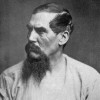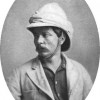Lake Victoria, Lake Tanganyika, Africa
Lake Victoria and Lake Tanganyika are part of a series of lakes (The African Great Lakes) that constitute part of the Rift Valley lakes and the East African Rift. Lake Victoria is the third-largest fresh water lake in the world by area, and Lake Tanganyika is the world’s second-largest freshwater lake by volume and depth. British explorers Richard Burton and John Speke were the first Europeans to discover the lakes during the quest for the source of the Nile in 1858.
Parent Map
Coordinates
Latitude: -0.997874361342
Longitude: 32.702637612820
Longitude: 32.702637612820



